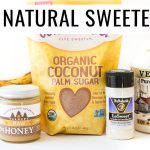How to Eat Purslane: Purslane, often considered a weed, is a nutrient-rich plant that has been consumed for centuries due to its numerous health benefits. In this comprehensive guide, we’ll delve into everything you need to know about eating purslane, from its nutritional value to delicious recipes and useful tips.
Nutritional Value of Purslane:
Purslane is packed with essential nutrients, including vitamins A, C, and E, as well as omega-3 fatty acids, magnesium, potassium, and iron. Its high antioxidant content makes it a valuable addition to any diet, supporting overall health and well-being.
Health Benefits of Eating Purslane:
- Heart Health: The omega-3 fatty acids in purslane can help reduce inflammation and lower the risk of heart disease.
- Improved Digestion: Purslane contains dietary fiber, which promotes healthy digestion and prevents constipation.
- Weight Management: With its low calorie and high fiber content, purslane can aid in weight loss and weight management.
- Bone Health: The calcium, magnesium, and phosphorus in purslane support bone health and may help prevent osteoporosis.
- Immune Support: The vitamins and antioxidants in purslane strengthen the immune system and help the body fight off infections.
How to Harvest Purslane:
Purslane can often be found growing wild in gardens, fields, and even cracks in sidewalks. When harvesting purslane, look for young, tender leaves and stems. Use scissors or your fingers to gently pluck the leaves and stems from the plant, being careful not to damage the roots.
How to Eat Purslane:
Purslane can be eaten raw or cooked and used in a variety of dishes. Here are some popular ways to enjoy purslane:
- Raw in Salads: Add purslane leaves to salads for a crunchy texture and fresh flavor.
- Stir-fries and Sautes: Cook purslane with garlic, olive oil, and your favorite seasonings for a nutritious side dish.
- Smoothies: Blend purslane leaves into your favorite smoothie recipe for an added nutrient boost.
- Pesto: Use purslane to make a delicious and nutritious pesto sauce, perfect for pasta or sandwiches.
Purslane Recipes:
- Purslane Salad: Combine purslane leaves with tomatoes, cucumbers, feta cheese, and a simple vinaigrette for a refreshing summer salad.
- Purslane Stir-Fry: Stir-fry purslane with garlic, ginger, soy sauce, and your choice of vegetables for a flavorful and nutritious dish.
- Purslane and Potato Soup: Cook purslane with potatoes, onions, and vegetable broth for a comforting and hearty soup.
Tips for Eating Purslane:
- Wash Thoroughly: Rinse purslane leaves and stems under cold water to remove any dirt or debris before consuming.
- Use in Moderation: While purslane is nutritious, it’s best to consume it in moderation due to its oxalate content, which can interfere with calcium absorption.
- Experiment with Recipes: Get creative with purslane by experimenting with different recipes and cooking methods to find what you enjoy most.
- Consider Cultivation: If you have access to purslane seeds, consider cultivating your own purslane plants in pots or garden beds for a fresh and sustainable source of this nutritious green.
FAQs about Eating Purslane:
Is Purslane Safe to Eat?
Yes, purslane is safe to eat and has been consumed as a food source for centuries.
Can I Eat Purslane Raw?
Yes, purslane can be eaten raw in salads, sandwiches, and smoothies.
Where Can I Find Purslane?
Purslane can often be found growing wild in gardens, fields, and even urban environments.
Are There Any Side Effects of Eating Purslane?
While purslane is generally safe to eat, some individuals may experience digestive discomfort if consumed in large quantities.
Conclusion:
Incorporating purslane into your diet can provide a plethora of health benefits and add diversity to your meals. Whether enjoyed raw in salads or cooked in stir-fries, purslane is a versatile and nutritious addition to any culinary repertoire. Experiment with different recipes and cooking methods to discover the many ways to enjoy this underrated green.











